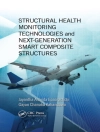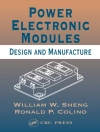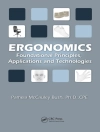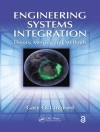High-surface-area materials have recently attracted significant interest due to potential applications in various fields such as electrochemistry and catalysis, gas-phase catalysis, optics, sensors and actuators, energy harvesting and storage. In contrast to classical materials the properties of high-surface-area materials are no longer determined by their bulk, but by their nanoscale architecture. Nanoporous gold (np-Au) represents the fascinating class of mesoporous metals that have been intensively investigated in recent years. The current interest and the increasing number of scientific publications show that np-Au by itself is an outstanding nano-material that justifies a book devoted to all aspects of its properties and applications. The resulting publication is a discussion of this unique nano-material and is an accessible and comprehensive introduction to the field. The book provides a broad, multi-disciplinary platform to learn more about the properties of nanoporous gold from an inter-disciplinary perspective. It starts with an introduction and overview of state-of-the-art applications and techniques characterizing this material and its applications. It then covers the progress in research within the last years. The chapters are in-depth overviews written by the world’s leading scientists in the particular field. Each chapter covers one technique or application so that the reader can easily target their favoured topic and will get the latest and state-of-the-art information in the field.
Daftar Isi
Introduction to nanoporous gold; Alloy corrosion – A history; De-alloying mechanism; Mechanical properties of nanoporous gold; Microfabrication of nanoporous gold; Optical applications of nanoporous gold; Actuation with nanoporous gold; Surface chemistry and catalysis; Electrocatalytical properties of nanoporous gold; Sensor applications
Tentang Penulis
Arne Wittstock is at the Universitõt Bremen/Institute for Applied and Physical Chemistry and Lawrence Livermore National Laboratory, Physical and Life Science Directorate, Nanoscale Synthesis and Characterization Laboratory, USA. He studied chemistry at the University of Bremen and completed his diploma thesis at Kr³ss Gmb H in Hamburg. Afterwards, he undertook his doctoral studies in Marcus Bõumer’s group at the Institute for Applied and Physical Chemistry and received his Ph D from the Department of Chemistry at Bremen University. Meanwhile he was also a visiting researcher at the Nanoscale Synthesis and Characterization Laboratory at the Lawrence Livermore National Laboratory. Since 2010, Arne Wittstock has co-supervised the projects on nanoporous gold at the Institute of Applied and Physical Chemistry and he also joined the Lawrence Livermore National Laboratory working on nanoscaled functional materials. His main research interests lie in the field of the physical chemistry of surfaces, nanostructured materials for energy-related applications, sensors, and catalysis. He has published several papers in Science, Nature Materials, Nano Letters and other key journals and also possesses patents. Juergen Biener is currently one of the leaders in the Nanoscale Synthesis and Characterization Laboratory at the Lawrence Livermore National Laboratory, USA and a Harvard affiliate. He studied chemistry at the Ludwig-Maximilians-Universitõt in Munich and completed his doctoral research in the field of surface science at the Max-Planck-Institute of Plasma Physics (IPP) in Garching. He received a fellowship from the German Academic Exchange Service (DAAD) to work with Bob Madix at Stanford University on metal oxide model catalysts. He then returned to the IPP to continue his research on plasma-wall interactions and in 2003 he accepted a visiting scientist position at the Center for Imaging and Mesoscale Structures at Harvard University where he started his work in the field of gold surface chemistry. Currently, his research interest lies at the intersection of surface chemistry, physics and mechanics of high-surface-area materials. He is the author of over 100 scientific publications, patent applications and book chapters. Jonah Erlebacher is at the Department of Materials Science and Engineering, Johns Hopkins University, USA. Marcus Bõumer is a Professor at the Institute of Applied and Physical Chemistry at the University of Bremen where he leads a research group working on nanostructured surfaces and innovative catalytic materials. He graduated in chemistry and received his Ph D at the Ruhr-University Bochum, Germany in 1994. In the following years, he carried out postdoctoral research at the Ruhr-University, Stanford University, USA and the Fritz-Haber-Institute, Berlin, Germany. In 2000, he received his habilitation in physical chemistry at the Technical University Berlin and became Professor at the University Bremen in 2002. His current research areas comprise nanoporous materials, colloidal nanoparticles and rare earth oxide materials and their use in heterogeneous catalysis and sensorics.












